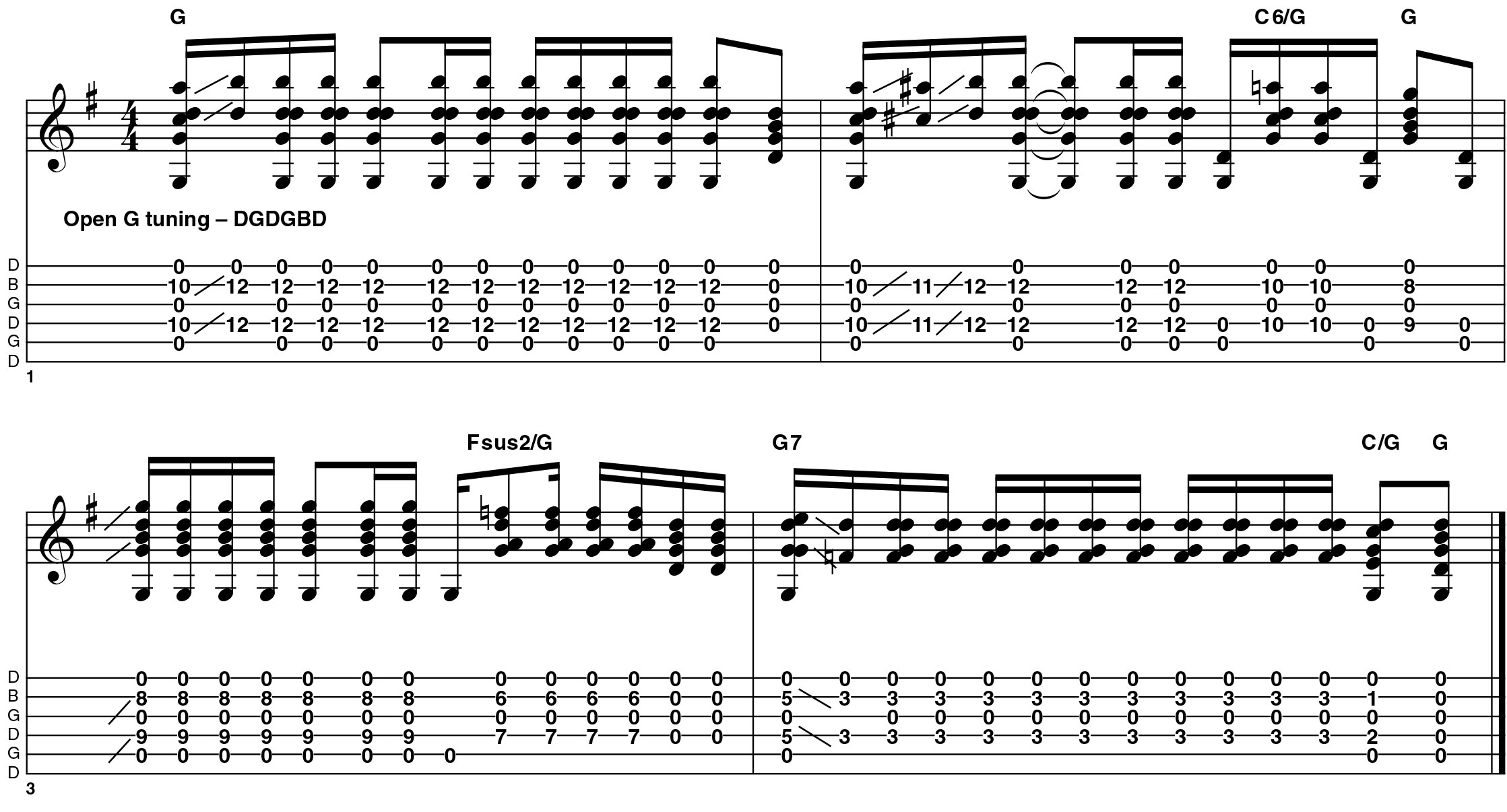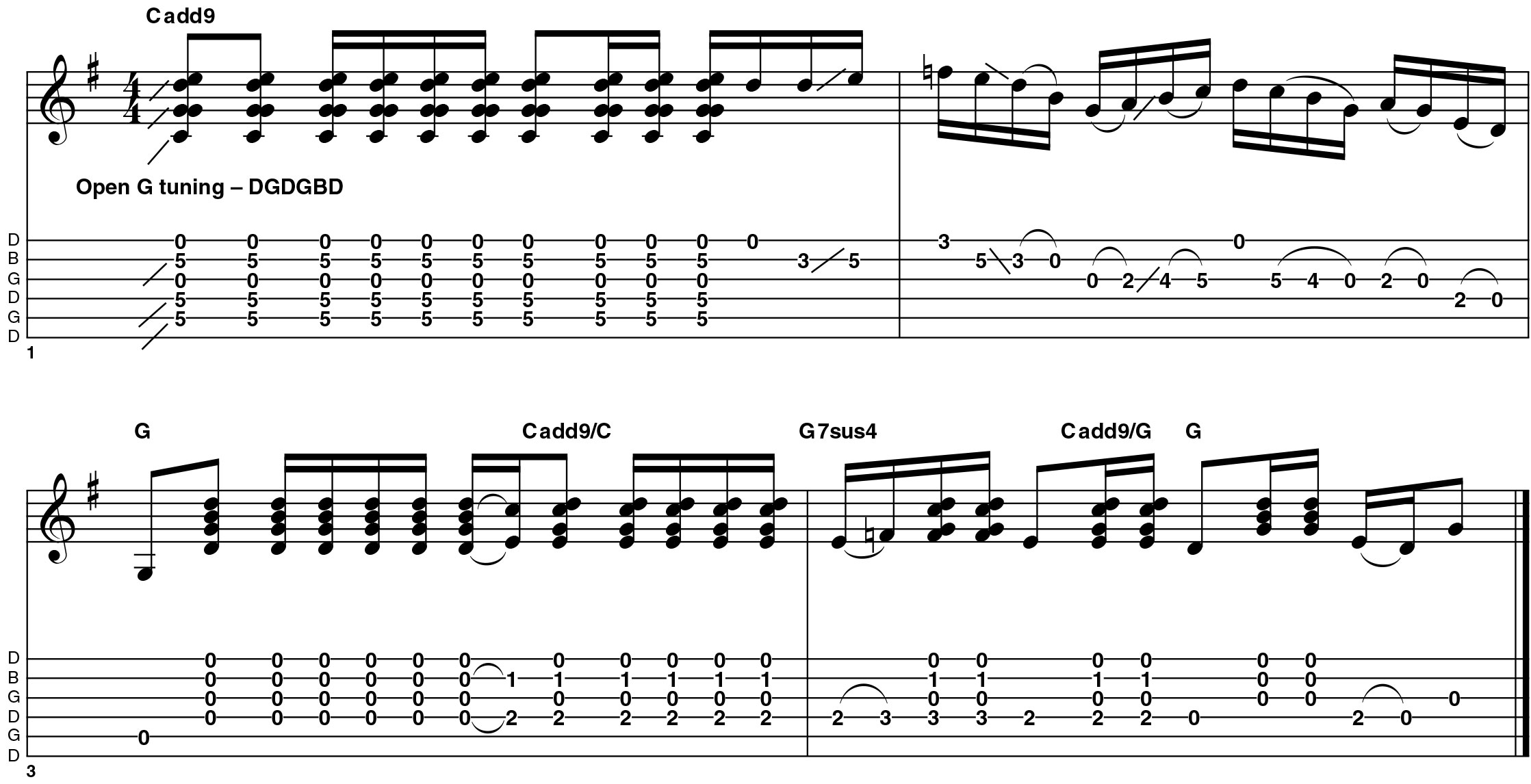Master open G tuning with these classic acoustic folk riffs
Play like guitar legends Son House and Jimmy Page

Many of the blues masters use open tunings as part of their sound. In this case we’ve tuned to an open G chord, which runs from low to high D, G, D, G, B, D, and often featured in the acoustic stylings of Jimmy Page, particularly on Led Zeppelin’s so-called ‘acoustic’ third album.
In fact, we’ve borrowed the general feel of Zep’s bluegrass-hued track Bron-Yr-Aur Stomp for this month’s transcription. Mr Page aside, open G has been used by many legendary players, including Robert Johnson and Son House [pictured]. The beauty of an open tuning like this is that it allows whole chords to be fretted with one finger or slid around using a bottleneck.
Using mostly two-finger chords, this lesson explores the possibilities for playing different ideas up and down the fretboard. The open strings function as a drone, and the occasional single note lines make for a bit of extra excitement. This style doesn’t really require anything in the way of backing, but we’ve done a simple Led Zep III inspired bass/ drum pattern to add a little more movement and give a time reference for practising.
So dust off your acoustic guitar, find your tuner, fire up open G and get ready to stomp, Jimmy Page style!
Example 1
Using what would be a minor 7th chord in standard tuning, this example moves it to different positions to give different voicings. We’ve also played a pull-off lick at the halfway mark. Switching in and out of moments like these - from strumming to single notes and back - may be a challenge, but you’ll be amazed at how quickly you become accustomed to working in a different tuning if you’ve never tried it before!
Example 2
Moving up to C (the V chord) this idea involves transposing virtually the same set of possibilities up to the 5th fret, albeit limited by the necessity of the bar across the top five strings. Two bars later, we’re back to the open G shape exploring some further single note ideas. We’re not using the open 6th string for the low D anywhere here, but it’s easy to incorporate and is well worth a try.
Example 3
This example showcases a moving set of chord inversions that your fretting hand fingers may recognise as the A minor 7th and A7th shapes from standard tuning at various locations along the ’board. The chord names here are an attempt at outlining the specifics of the harmony, though it’s also acceptable to view these as moving implied chords in the overall context of G major, courtesy of the open G tuning.
Want all the hottest music and gear news, reviews, deals, features and more, direct to your inbox? Sign up here.
Example 4
An alternate take over the C chord leads to a more intricate, bluegrass style pattern - though you could just as easily find this kind of pattern in folk music too. Try varying the strength of your strumming attack to emphasise the melodic sense given by the moving chords. This may be worth practising slowly to avoid tripping over the more fiddly parts, before playing along with the backing track.




